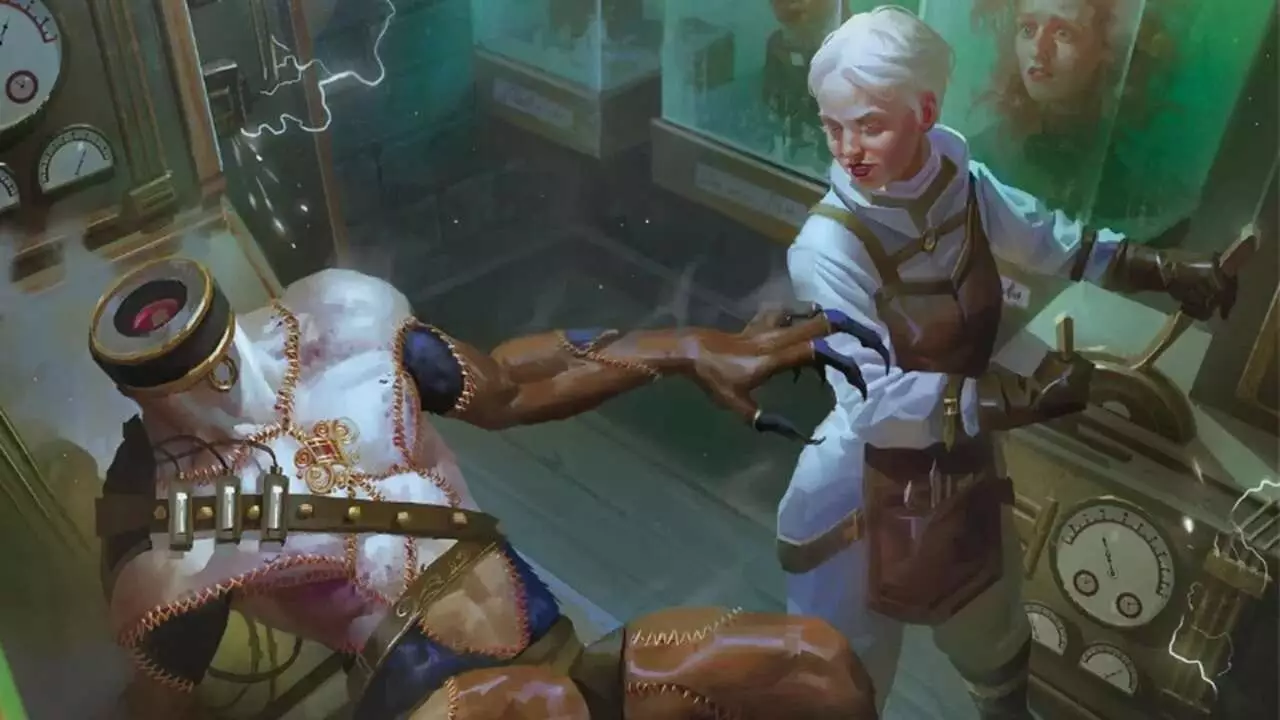In a universe where imagination knows no bounds, the convergence of horror stories with role-playing games such as Dungeons and Dragons (D&D) provides a thrilling experience that captivates players. Wizards of the Coast, the company behind D&D, has struck again with their latest Unearthed Arcana playtest, unveiling a suite of eight new subclasses that lean into themes of the macabre and spine-chilling. Two of these subclasses are fresh newcomers to the D&D landscape, while the remaining six are revitalized editions of existing subclasses from the fifth edition, all reimagined to further embody the essence of horror.
The latest update has been designed with intentionality, inviting players to dive deeper into their characters while exploring the darker aspects of their alternate identities. The creative minds behind this endeavor include Mackenzie de Armas, a game designer passionate about crafting engaging gameplay experiences, and Todd Kenreck, a renowned D&D influencer. Through a collaborative effort, they seek to enhance both game mechanics and narrative depth.
Reviving the Old and Introducing the New
The two new subclasses poised to captivate players’ imaginations are the *Reanimator* (Artificer) and *Hollow Warden* (Ranger). They evoke the haunting atmosphere of classic horror literature, encouraging players to immerse themselves in the unsettling world of their characters. The *Reanimator*, for instance, finds its inspiration in works such as Mary Shelley’s *Frankenstein*. This Artificer subclass allows players to engage in grotesque experiments, manipulating the very fabric of life and death. With the ability to construct flesh golems and raise companions from the dead, the Reanimator revels in the moral ambiguity and ethical dilemmas associated with necromancy.
Conversely, the *Hollow Warden* embodies a more primal, nature-centric horror. This Ranger subclass taps into the folklore of ancient forest guardians and cryptids, allowing players to become merciless sentinels of the wild. Their powers channel the terrifying aspects of the natural world, transforming a typical Ranger into a relentless protector of haunted landscapes. De Armas’s enthusiasm for folklore and cryptid legends shines through, making this subclass an enticing choice for players yearning for a deeper connection to their environment.
Revisiting Fan Favorites
The six revised subclasses hail from popular expansions, breathing new life into characters that fans already adore. The *College of Spirits* Bard acts as a spirit medium, connecting with the deceased to empower allies and curse foes. This subclass promises to weave captivating storytelling into gameplay, allowing players to shape their own narratives by calling upon the spirits that haunt them.
The *Grave Domain* Cleric is another noteworthy revamp that accentuates the balance between life and death. Not only can they enhance the healing abilities for fallen comrades, but they can also inflict curses that heighten their enemies’ vulnerability, crafting a formidable presence on the battlefield.
Meanwhile, the *Phantom* Rogue embraces a mystical affinity for death, enhancing their stealth abilities and further distinguishing themselves as masters of subterfuge. By harvesting souls and infusing their strikes with this negative energy, these Rogues become a double-edged sword in any campaign, capable of both information gathering and providing deadly strikes.
Additionally, the *Shadow Sorcery* Sorcerer taps into the deep, shadowy essence of the multiverse, allowing for gameplay that is as captivating as it is sinister. With the ability to teleport and summon the undead, players who choose this subclass can navigate the darkness with grace, rendering their adversaries vulnerable to their necrotic arts.
The two Warlock subclasses, *Hexblade Patron* and *Undead Patron*, represent the duality of dark power within the game. Bound to magical weapons or the eerie essence of undead beings, these Warlocks wield curses and spells that can turn the tides of battle in a heartbeat.
Feedback and the Evolution of Gameplay
It’s crucial to emphasize that these subclasses are currently in the playtest phase, which invites players and enthusiasts to provide constructive feedback. This collaborative approach encourages gamers to engage in the evolution of these subclasses, participating in shaping the rules and mechanics to fit a broader audience. The fact that players can share their thoughts until May 13 adds an element of community involvement rarely seen in gaming development.
While these options remain experimental and especially are not permissible in official D&D Adventurers League events, they foreshadow a thrilling future where the darker impulses of role-playing games can be explored with daring finesse. The presence of horror elements in D&D opens avenues for innovative storytelling, character development, and gameplay that delve into the curious and often terrifying facets of human emotion. Thus, the tantalizing question remains: are players ready to confront their fears and embrace the allure of darkness? The answer could redefine their gaming experience.

